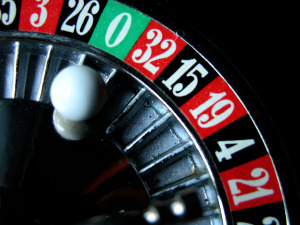
Casino operators have cued in to the importance of analytics because as little as one percent of casino customers can drive as much as 20% of the company’s revenue.
This fact alone has spurred casinos into building sophisticated customer relationship management (CRM) systems to track and reward customer loyalty to increase the returns from select customers and retain them for the long term.
One tool being used by casinos is predictive analytics. Predictive analytics is using statistics to analyze current and historical facts to make future predictions about a customer’s behavior.
For some casinos, as little as a five percent improvement in customer retention can lead to a fifty percent gain in profitability. Author Clive Pearson explains in Double Down on Your Data that by using predictive analytics, Harrah’s was able to identify a small group of customers who accounted for 30% of their overall customers.
They then learned that these particular customers spent between $100 and $499 per trip but actually accounted for about 80% of the casino’s revenue and 100% of its profits.
By using data mining and predictive analytics, casinos keep their highest value customers happier longer and take high-value customers away from the competition. Furthermore, predictive analytics can help casinos pinpoint customers who are most likely to “defect” from the competition with enough lead time to allow casino employees to intervene and possibly retain these highly valuable, hard to recapture customers.
Which of the Three Predictive Analytics is Your Casino Using?
The world of data has evolved. In the beginning companies would look at past events to predict future activity as gleaned from information management systems from the 1970s. Then drill-down technology of the 1980s led to data warehousing, which allowed more complex data querying. Then predictive modeling and optimization rang in the new millennium.
Now you can use one of three types of data analytics:
- Predictive – using past performance to predict future customer behavior.
- Descriptive – identifying different relationships between customers or groups.
- Decision – using the above information to predict outcomes or complex decisions, relationships, products or processes.
Executed correctly predictive analytics can determine how much a customer is worth today and for his lifetime, which customers come together in groups, and which customer might abuse an incentive offer by using the free room and not gambling at all.
Pearson so eloquently puts it this way. “Do you want to lead the analytics horse to profitability…or follow it with a shovel?” The choice is clear.

